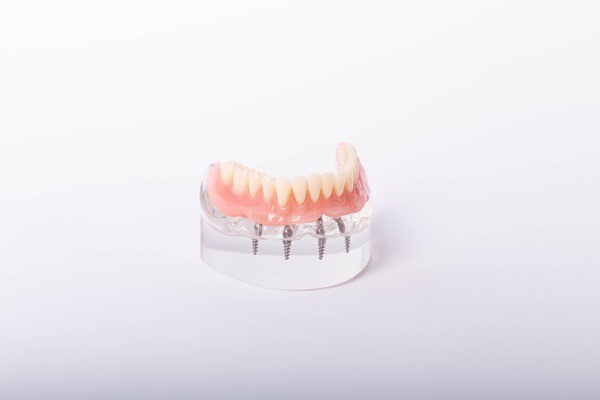A Guide to the All-on-4 Procedure

Conventional dentures can help those with missing teeth eat and speak with more confidence. However, those who find these dentures uncomfortable may benefit from all-on-4® implants. This technique involves implanting four support posts into the jawbone that support a set of fixed teeth as opposed to removable dentures, which some wearers may find more stable and comfortable. Individuals considering this procedure may want to first understand the steps involved and how the implants work so they can make the most informed choice possible for their dental health.
What are fixed dentures?
Removable dentures are a popular choice for many people who have multiple missing teeth, but some wearers may experience slippage, discomfort, and difficulty with the proper fit. All-on-4® implants can eliminate these issues, as the implants support a set of fixed teeth that are both permanent and stable. They can also provide several benefits to the wearer, such as:
- Greater dental comfort
- Improved confidence for eating and speaking
- A less-invasive implantation process
Patients who decide to replace their traditional dentures with a fixed set may want to review the implantation steps with their dentist so they know what to expect during each portion of the process.
Consultation
Patients considering fixed dentures will likely undergo an in-depth consultation with their dentist, who may review their dental history, take X-rays, and measure the density of the jawbone to ensure the stability of the four implants needed to set the permanent dentures. Patients may want to make a list of medications they take and any other issues that might concern them, such as gum health, during this portion of the procedure.
Implantation
The first step for implantation is the removal of any remaining teeth to make room for the fixed dentures. Once the extractions are finished, the dentist will make precise incisions in the gums to fit the four implants. The fixed dentures can be placed on the upper or lower part of the jaw, or both, depending on the patient's needs. Once the dentist places the titanium rods, he or she will close the incisions in the gums and give the jawbone time to grow around the implants that will support the new set of fixed dentures.
One advantage of the all-on-4® procedure is that dentists can set the implants at different angles to avoid areas of the jaw that may have reduced bone density. As such, even patients with such issues may choose these implants with little trouble.
The healing process
Once patients have the implant rods placed, they may experience some discomfort in the following days as the gum incisions heal. Bleeding and swelling may occur, and it may take at least six months for the gum tissue and bone to grow around the implants so the fixed dentures are stable and comfortable. Patients may want to report any unusual pain or severe swelling to their dentist during the healing process.
Conclusion
Fixed dentures can provide their wearers with years of comfort and confidence. Whether they choose an upper, lower, or complete set, this procedure can improve overall dental health and create a beautiful smile.
Request an appointment here: https://www.smilesbycanada.com or call Smiles by Dr. Canada at (281) 826-5180 for an appointment in our Houston office.
Check out what others are saying about our dental services on Yelp: All-on-4 in Houston, TX.
Recent Posts
All-on-4® implants are gaining popularity as a quick and easy solution to tooth loss. This procedure is less invasive than traditional dentures or bridges, but does it look natural? This blog post will discuss the challenges of these dental devices and how they compare to other tooth-replacement methods. This type of implant consists of four…
The All-on-4® procedure can significantly improve one's oral health and appearance. However, in order to achieve both, it is necessary to go through the entire process, which is known to be involved. Once the procedure is complete, the patient should prepare to undergo a lengthy recovery process. Recovery tends to be lengthy because the dental…
For those who have experienced partial or complete tooth loss, the closest option to the natural teeth is an implant-supported restoration like All-on-4®. Dental implants integrate with the jawbone, mimicking the role of the natural tooth root. This provides the optimal level of stability and durability and the stimulation required to keep the jaw healthy.Unfortunately,…
Choosing dental implants is a great idea if you are looking into your tooth-replacement options because you are missing one or more of your teeth. This option is one that offers benefits that other replacement options do not, which is why so many patients are choosing implants to replace their missing teeth. Other replacement options…


